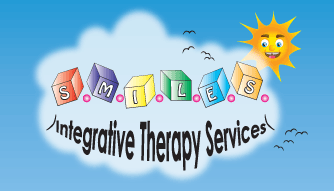There are many AAC (augmentation and alternative communication) applications out there to choose from these days making communication more accessible than it ever has been before. However, with so many choices, one must ask, “are they all high quality, and which is the best choice?” Here are some things to think about when looking for a high quality AAC app.
- Does it allow you to communicate as quickly and easily as possible?
There are many functions that are added to apps to make sure that communication can happen as quickly and functionally as possible including:- Core vocabulary: Common words that make up approximately 80% of what we say. Core words are usually buttons on the first page of a device so that a child has easy access to the most common words to make sentences quickly. Apps with core vocabulary allow a user to quickly generate sentences using core words.
- Keyboard: An easy way to type out words so that they can be voiced. This is usually used for less common words that are not used frequently enough to take up space in the app by programming a button for the specific word. Apps with keyboards allow a quick way for spontaneous production of words through spelling without needing to take the time to program a word into a device.
- Motor planning: Some applications are based on motor planning of movements so that a person will learn where buttons are by building consistent motor plans. Having built in motor plans for words will make communication faster as the person does not have to think to navigate where a word would be once the motor plan is built.
- Does it allow you to communicate a variety of communication functions?
Many times when just starting out with an AAC device the main concern of caregivers is making sure the person can make requests to obtain their wants and needs. However communication goes well beyond requesting. A person who utilizes AAC should be able to comment on their likes, dislikes and views of the world. They should be able to ask for clarification when they do not understand. They need to be able to ask questions to gain information to learn about their world and answer questions to demonstrate their knowledge. They should be able to verbally refuse or give directions as well as these types of communication allow an individual to have power in their world and manipulate their environment. - Does it allow room for growth?
Apps can be made to express a variety of language from very simple language for one specific event to a very complex language system that has unlimited vocabulary and a keyboard for spontaneous novel word generation. Every time you switch AAC systems the user must learn how to utilize the system efficiently. For many AAC users it may be easier to stick with the same system from just starting out with communication to functional everyday conversational communication. There are apps out there that allow for growth to occur in the same app from first word to complete conversational sentence generation. This limits excess learning needed to learn a new system once one system is outgrown. - Is it easy to edit?
Since AAC is so personal to each individual it is important that it is easy to edit to allow for the personalization of the app. Things to take into account are ease of button addition, deletion and modification, as well as space for fringe (specific personal vocabulary that one person may use frequently but another may not use at all) vocabulary. - Is it easy to learn and navigate?
AAC does no one any good if it is sitting on the shelf or the app is on the iPad, but no one is using it. It is important to trial apps to see if the child is able to learn it quickly and easily. Some apps have search buttons to help you find vocabulary. Most have vocabulary organized in some fashion (categories, abc order etc.). It is important to take a look at individual apps to see if the organization of it makes sense to the user and if the user is able to easily learn how to functionally communicate independently.
It is important to trial any AAC option to see if it is right for you, as everyone is different and AAC choices should be based on your individual needs. It is a good idea to discuss AAC options with a speech language pathologist who is knowledgeable in language development and current AAC technologies. It is also important to remember that no AAC device will be successful without appropriate language intervention. Feel free to contact us for more information regarding AAC evaluation and therapy.



Recent Comments